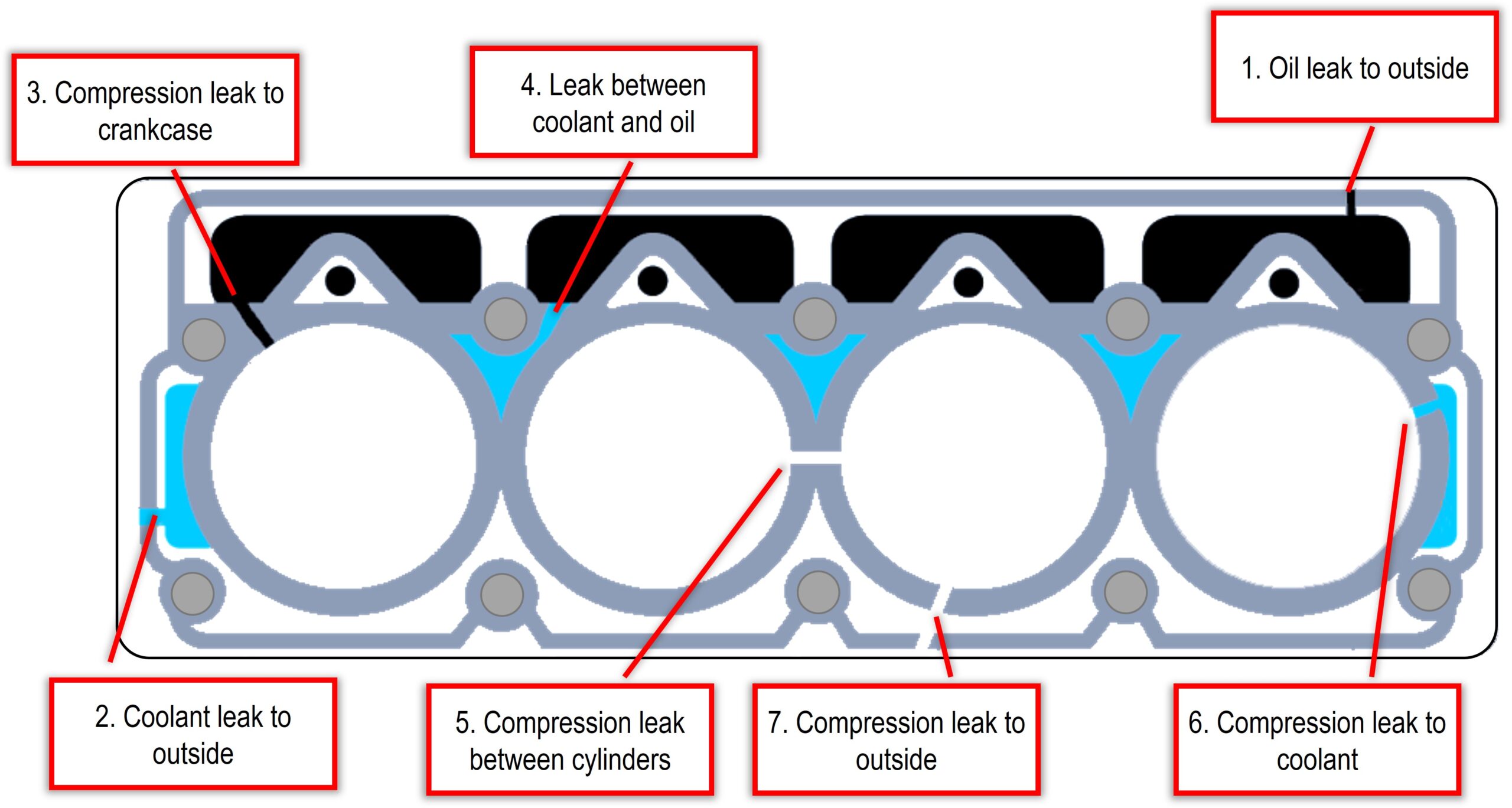A head gasket is the most over stressed gasket in an engine as it seals between the cylinder head and engine block deck. These gaskets resist a number of forces including pressure, temperature, engine vibration, and cylinder-head shifting and flexing. Additionally, head gaskets need to resist shearing forces due to uneven expansion rates between aluminum cylinder heads and cast-iron engine blocks. Blown head gaskets can happen in a variety of ways and can vary significantly depending on how and where the failure occurred. Testing engine oil and coolant regularly can help to diagnose head gasket failures.
Ways a Head Gasket Can Fail
- Oil leak to outside of engine: Oil leaking down the side of your engine likely means the head gasket has blown between an oil gallery and the outside of the engine. Even though this type of head gasket failure isn’t as immediately severe as others, you should still look into repairs before it gets worse. Monitory your engine oil levels and keep it topped up.
- Coolant leak to outside of engine: If you are seeing your coolant level is consistently low or evidence of coolant on the ground, this may be an indication that the head gasket has blown between a coolant passage and the outside of the engine. Running the engine with low coolant can cause the engine to overheat.
- Compression leaks to crankcase: If you are seeing a drop in engine oil levels and blue smoke from the exhaust, you’re likely experiencing a head gasket failure between the cylinder and an oil gallery. Hot compression gasses will enter the oil system and pressurizes the crankcase. This could compromise crankshaft main bearing lubrication and allow for the piston to suck oil into the cylinder where it will burn off.
- Blown between coolant and oil: If you are seeing a milky, frothy sludge that looks like a “milk shake” in your engine oil, your head gasket may have blown between an oil gallery and coolant passage. You can expect overheating and eventually severe damage to your engine if you are driving around with a coolant to oil or oil to coolant leak. This is why routine coolant testing and oil testing is important.
- Compression leak between cylinders: Rough idling, misfires, and a loss of power may indicate that the head gasket has failed between cylinders. This causes a loss of compression as compression leaks from one cylinder to the next and can cause exhaust gasses to flow back into the intake.
- Compression leak to coolant: If you are seeing low engine coolant levels, or a sweet-smelling white smoke coming out of your exhaust, the head gasket may have blown between the cylinder and coolant passage. A drop in coolant levels or exhaust gasses pressurizing the cooling system can cause the engine to overheat.
- Compression leak to outside: This less typical head gasket failure can cause a ticking noise at idle, rough running, or a loss of power.
Catch it Early, React Quickly
Repairing a head gasket is expensive and not for the faint of heart. Diagnosing a head gasket failure requires experience and a methodical approach as other issues within an engine or cooling system can cause similar symptoms. If the diagnosis points to a blown gasket, repairs should be made as soon as possible to prevent more damage and catastrophic failure.
Coolant system issues are one of the top reasons causing engine overheating and increases the potential for a blown head gasket. When coolant mixes with engine oil, it can reduce an oil’s lubricating properties leading to engine failure. If the oil leaks into the coolant, this can seriously degrade the coolant’s ability to function effectively. A good preventive maintenance step is taking routine oil and coolant samples to monitor that your cooling system is working effectively and that contamination, either way, is not happening. Routine and triggered testing can also help to diagnose a potential head gasket failure.
References:
https://haynes.com/en-us/tips-tutorials/7-different-ways-head-gasket-can-fail
https://www.motortrend.com/features/1206dp-why-head-gaskets-fail/
